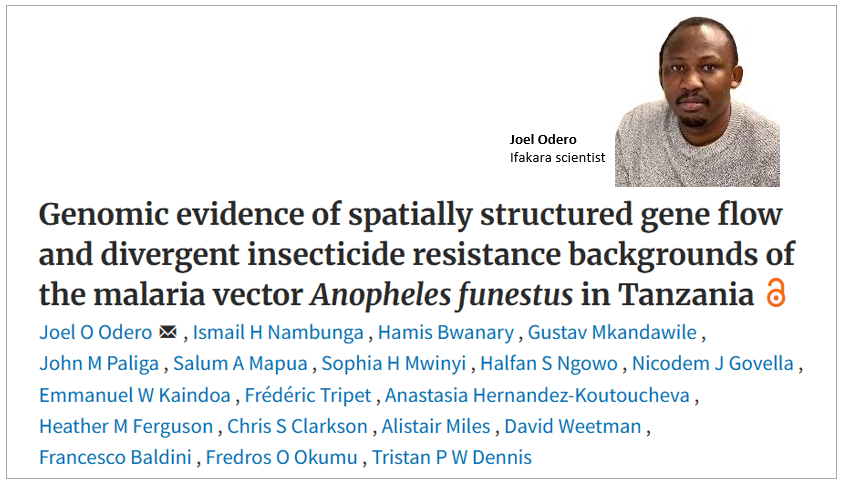
GROUNDBREAKING: Study finds malaria-spreading mosquitoes evolving differently across regions

Every night, families across Tanzania sleep under mosquito nets, hoping to stay safe from malaria. But new research shows that the mosquitoes they’re trying to avoid are changing—and not all in the same way. Depending on where they live, these mosquitoes are evolving differently, which could affect how well our current malaria prevention tools work.
Scientists from the Ifakara Health Institute, in collaboration with international partners, have found that anopheles funestus—one of the main malaria-spreading mosquitoes in Tanzania—is not a single, uniform threat. Instead, different populations of this species are developing unique genetic traits, including varied resistance to the insecticides used to kill them.
Why this discovery is important?
This discovery, published on the Genetics journal, matters because most malaria control efforts use a one-size-fits-all approach: same bed nets, same sprays, same treatment across the country. But if mosquitoes are changing in different ways, this strategy may no longer work, highlighting the need for region-specific strategies to target each mosquito population effectively.
Two distinct populations of the same mosquito identified
The researchers discovered that funestus can be grouped into two genetically distinct populations—eastern and western. This discovery means that mosquitoes in Morogoro and Pwani might not behave—or resist treatment—the same way those in Kigoma and Mwanza.
The two groups are separated by the country’s central region, which includes the dry and elevated Rift Valley area. This zone acts as a natural barrier to mosquito movement and gene flow and over time, the separation has led them to evolve differently.
Different insecticide resistance mechanisms
When it comes to insecticide resistance, the problem gets more serious. Both groups of mosquitoes are becoming tougher to kill—but they’re doing it in their unique ways.
For example, eastern mosquitoes have developed certain genetic mutations (V103I, L122F), while their western cousins have others (Y168H, G454A). One of these—G454A—is especially worrying, as it gives strong resistance to insecticides used in bed nets. In the west, nearly every mosquito carries it.
Implications for malaria control tools
These findings suggest it’s time to rethink how Tanzania—and other African countries—fight malaria. Instead of a blanket solution, scientists now recommend tailoring mosquito control strategies to specific regions, depending on how the local mosquitoes are evolving.
This could include deploying different types of bed nets, using alternative insecticides, or rolling out new technologies like gene drives or sterile insect releases—but in the right places, at the right times.
Understanding the genetic divide is crucial
This team of scientists recommends further research to understand what these genetic differences mean for malaria control—especially whether the two mosquito groups differ in how they spread malaria.
"Our findings provide the most detailed study of Tanzanian An. funestus population structure and resistance genetics to date. The observed population disconnectedness should be considered for insecticide deployment, resistance management, and the rollout of novel genetic-based vector control approaches," the authors underlined.
Ifakara’s Joel Odero led the study
This groundbreaking study was led by Joel Odero under the supervision of Fredros Okumu and Francesco Baldini—both from the Ifakara—alongside David Weetman and Tristan Dennis from the Liverpool School of Tropical Medicine (LSTM) in the UK.
Additional contributors from Ifakara include Ismail Nambunga, Hamis Bwanary, Gustav Mkandawile, John Paliga, Salum Mapua, Sophia Mwinyi, Halfan Ngowo, Nicodem Govella, and Emmanuel Kaindoa. The team also included Frédéric Tripet (Keele University), Anastasia Hernandez-Koutoucheva, Chris Clarkson, and Alistair Miles (Wellcome Sanger Institute), Heather Ferguson (University of Glasgow), and David Weetman (LSTM).
Read the publication here.
